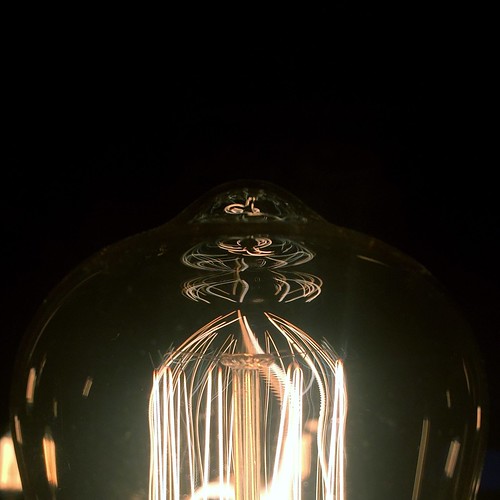In ARPE-19 cells, the t-BH-induced VEGF expression (7.one-fold, P, .001) reduced five.4-fold in contrast to the manage with cotreatment of 25 mg/mL of M. officinalis extract (P = .039). Notably, the t-BH-induced MMP-nine expression (3.seven-fold, P = .020) lowered considerably following cotreatment of twenty five mg/mL of M. officinalis extract (1.8-fold, P = .035). In HUVEC, t-BHinduced VEGF (one.nine-fold, P = .003) and MMP-9 (2.6-fold, P = .040) transcription ended up considerably diminished to 1.2-fold (P = .001) and 1.2-fold (P = .035), respectively, compared with control with cotreatment of twenty five mg/mL of M. officinalis extract. MCE Chemical JK184 Nevertheless, the expression of MMP-2 mRNA did not alter in the t-BH taken care of cells, nor did that in the t-BH and M. officinalis extract taken care of cells.
To evaluate the in vivo impact of M. officinalis extract on angiogenesis, FA was executed 14 times after laser photocoagulation. Comparison of angiograms between teams unveiled that equally the low-dose and higher-dose treatment teams developed CNV lesions that had been considerably less leaky than those in the control team. Determine four illustrates the proportion of CNV lesions with fluorescein leakage in each and every team. Pathologically important leakage (grade 2B lesions) was observed in 53.4%, 39.1%, and 9.two% of lesions in the handle, minimal-dose, and large-dose groups, respectively. The distinction in proportion of grade 2B lesions amongst the highdose and handle teams (P,.001), and the substantial-dose and lowdose teams (P,.001) have been statistically important.
To determine whether or not anti-angiogenic homes of M. officinalis extract on CNV was mediated by anti-VEGF and MMP-inhibitory actions, the VEGF, MMP-2, and MMP-nine levels of the choroid-sclera and retina were calculated 7 times following CNV induction. As proven in Determine 5A and 5B, imply choroidal-scleral (438.03640.38 pg/mg) and retinal (405.30627.ten pg/mg) VEGF amounts ended up drastically reduce in the large-dose treatment group than in the management group (choroid-sclera: 525.07649.09 pg/mg, P = .029 retina: 479.30619.forty three pg/mg, P = .029). The VEGF stages were significantly lower in the minimal-dose remedy group, than in the control team in choroidal-scleral tissue (437.13639.61 pg/mg, P = .029), but not in retinal tissue (490.38631.26 pg/mg, P =  .686). Imply normalized MMP-2 level in the substantial-dose team was 2 729.166211.forty five pg/mg in choroidal-scleral15947036 tissue and 1 662.876361.ninety pg/mg in retinal tissue, the two of which ended up considerably reduced than in the handle team (choroid-sclera: three 454.156281.66 pg/mg, P = .039 retina: two 121.566140.21 pg/ mg, P = .049). Nevertheless, distinctions in MMP-two levels amongst the lower-dose (choroid-sclera 3 345.496160.seventy three pg/mg, P = .509 retina: one 958.616346.73 pg/mg, P = .309) and control teams were not statistically considerable (Determine 5C and 5D). Mean MMP9 levels had been significantly greater in controls than in the substantial-dose and reduced-dose treatment method groups. Choroidal-scleral MMP-nine level was two.3660.42 ng/mg, one.7160.14 ng/mg (P = .029), and 1.8260.02 ng/mg (P = .038) in the manage, reduced-dose, and higher-dose teams, respectively. Retinal MMP-nine level was 5.6562.24 ng/mg, 3.4460.eleven ng/mg (P = .019), and three.5360.thirteen ng/mg (P = .019) in the manage, reduced-dose, and high-dose groups, respectively (Determine 5E and 5F).
.686). Imply normalized MMP-2 level in the substantial-dose team was 2 729.166211.forty five pg/mg in choroidal-scleral15947036 tissue and 1 662.876361.ninety pg/mg in retinal tissue, the two of which ended up considerably reduced than in the handle team (choroid-sclera: three 454.156281.66 pg/mg, P = .039 retina: two 121.566140.21 pg/ mg, P = .049). Nevertheless, distinctions in MMP-two levels amongst the lower-dose (choroid-sclera 3 345.496160.seventy three pg/mg, P = .509 retina: one 958.616346.73 pg/mg, P = .309) and control teams were not statistically considerable (Determine 5C and 5D). Mean MMP9 levels had been significantly greater in controls than in the substantial-dose and reduced-dose treatment method groups. Choroidal-scleral MMP-nine level was two.3660.42 ng/mg, one.7160.14 ng/mg (P = .029), and 1.8260.02 ng/mg (P = .038) in the manage, reduced-dose, and higher-dose teams, respectively. Retinal MMP-nine level was 5.6562.24 ng/mg, 3.4460.eleven ng/mg (P = .019), and three.5360.thirteen ng/mg (P = .019) in the manage, reduced-dose, and high-dose groups, respectively (Determine 5E and 5F).